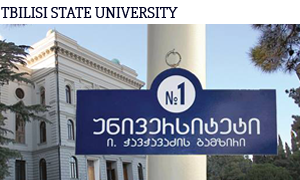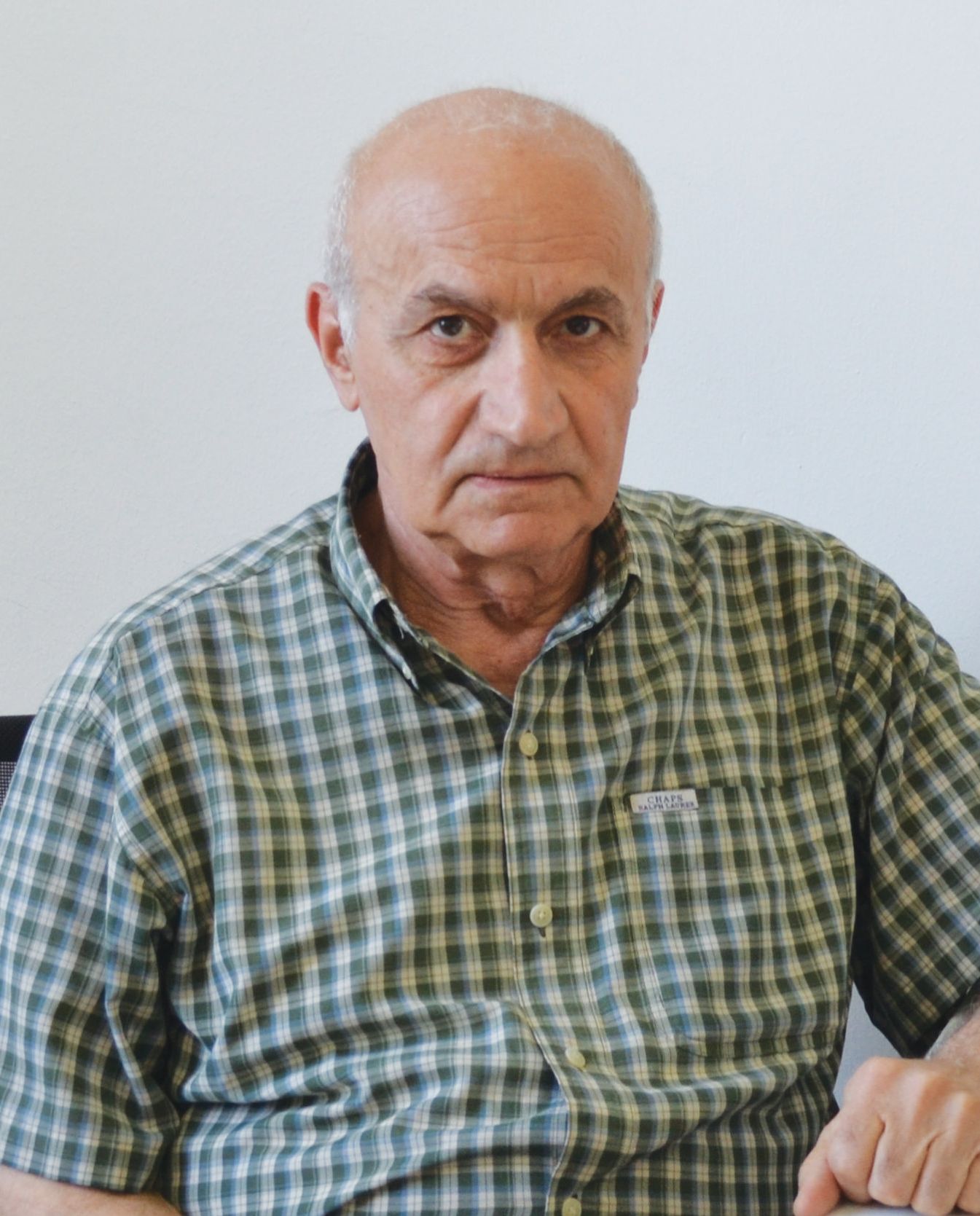
FACULTY OF EXACT AND NATURAL SCIENCES
Non-Traditional Proton Transfer Reaction Mechanisms
DNA research is one of the major tasks for scientists working at the molecular and atomic physics. One of the key components of DNA is protein, and its transfer processes play a major role in the course of chemical and biochemical reactions.
This is confirmed by prototropic tautomerism, hydration, dehydration and especially proton transfer between nucleotide bases that cause mutations in DNA. Scientists are especially interested in researching proton transfer mechanisms between the atoms separated by one, two or three chemical bonds as it is directly linked with the mutational processes ongoing in biologically active heterocyclic compounds. Frequently, proton transfer takes place in an organic molecule, however the mechanisms of this process are not yet known. Many scientists are working over this problem internationally including those in the Physical Chemistry Department of Tbilisi State University, led by Professor Jumber Kereselidze.
A new mechanism for intermolecular proton transfer has been identified: cyclic-dimeric (1) → (2) and (3) → (4), stacking (9) → (10), (11) → (12) and (13) → (14), where molecules are placed plane parallel and pentameric (15) → (16), representing an imidazole cycle of five molecules, where 1H – 3H proton transfer takes place. The advantage of this mechanism is they represent one-stage non-ionic processes with low energy expenditure, unlike traditional multi-stage mechanisms. This will lay the foundation for a new direction for theoretical chemistry, aimed at conducting a planned and purpose-oriented synthesis for modern fundamental notions of chemistry.

Previously less attention was paid to studying proton transfer mechanisms in nitric heterocyclic compounds; theoretical and experimental research has only been carried out in the last 15-20 years using modern physical methods while considering classical theories. It was believed that proton transfer in tautomeric processes represents an intra-molecular process. By using infrared spectrometry, we have shown that this process is passing through intermolecular proton transfer that was subsequently called a cyclic-dimeric mechanism (Pic. 1).
1H-7H proton transfer in 7-Azaindole has been researched using a quantum chemistry method that showed that this regrouping is also taking place by cyclic-dimeric mechanism (Pic. 2):
This model has been used in famous experiments by Ahmed Zewail, in which the regioselective initiation of the interrupting N1 - H compound took place with femtosecond laser pulses. As it is known, Zewail won the 1999 Nobel Prize in Chemistry for his work on femtochemistry.

Pic.2 Pic.3
Proton transfer between nucleotide bases is of special importance from both fundamental and applied points of view. In particular, the identification of new tautomeric forms of nucleotide bases on the basis of energy assessment has been considered a fundamental outcome. Applying this, quantitative results can be built on the hypothesis of P. Lovdin and V. Zenger, according to which the frequency of mutation in DNA can be evaluated by the total amount of rare tautomeric forms (Pic. 3).
This result merely has theoretical significance since the determination of these concentrations is connected to a number of experimental difficulties. However a adequate situation can be created by changing concentrations in the process of proton transfer between nucleotide bases by Lactam-Lactim (LL) and Amine-Imine tautomeric pairs.
nm = KT(LL) KT(AI)
The appropriateness of this approach is confirmed by calculations made by quantum-chemical methods. A remarkable example of a non-traditional proton transfer reaction mechanism is the stacking proton transfer mechanism in the para position of six-membered heterocycles.

Pic.4
As a result, tautomeric forms of 4-pyridone (9), 4-pyridinethione (11) and para-amino pyridine (13) are produced: (10), (12) and (14). The stacking process takes place between plane parallel molecules and is based on the principle of molecular dynamics, according to which molecules make waving--as well as turning and transferring--movements.
To ensure 1H-3H proton transfer in imidazole, we propose a permanent mechanism of proton cyclic transfer in the cycle of five imidazole molecules (Pic. 5)

Pic.5
This process happens exothermally and with low activation energy, indicating the adequacy of the pentameric mechanism.
Our research on non-traditional proton transfer mechanisms coincided in time with the most important phenomenon created by Zewail – the foundation of femtochemistry. The key goal of femtochemistry is to carry out regioselective initiation of reaction centers with high frequency laser pulses. The American Chemical Society subsequently founded the Ahmed Zewail Gold Medal, awarded to Professor Noel S. Hush from the University of Sydney in Spring 2013 at a ceremony in New Orleans. Our research team was invited to this event, due to the fact that in our articles we frequently focused on Zewail’s work and he was familiar with the work of a famous Georgian scientist, Giorgi Mrevlishvili.
The proposed cyclic-dimeric, stacking and permanent mechanisms of proton transfer in heterocyclic compounds represent intermolecular, one-stage and non-ionic processes, which have no analogues in the classical theory of chemical reaction mechanisms. Hence we should expect the development and experimental research of this new theoretical direction.
Identification of proton transfer mechanisms in these molecular systems enables us to carry out purpose-oriented and planned chemical and biochemical synthesis. In particular, when the exact mechanisms are known, it is possible to create favorable conditions for the course of synthesis. This is the goal for the practical use of this research, which has been widely introduced in universities of developed countries, and is also developing at Tbilisi State University, which is now giving due consideration to modern theories in the natural sciences.
Publications and References
(1. Кереселидзе, Дж. А., Ж. Физ. Хим., 1998, 72, 144-146. 2. Chem. Heterocycl. Comp., 1999, 6, 757-759. 3. Kereselidze J. A., Zarqua T.Sh. Chem. Heterocycl. Comp., 2000, 10, 1342-1344. 4. Kereselidze J. A., Zarqua T.Sh., Kikalishvili T. J., Churgulia E. J., Makaridze M. S. Russ. Chem. Rev. 2002, 71, 993-1003. 5. Kereselidze J. A., Phachulia Z.V. Theoret. and Experim. Chem. 2008, 44, 144-147. 6. Kereselidze J. A., Phachulia Z.V., Zarqua T.Sh. Chem. Heterocycl. Comp., 2009, 6, 856-861. 7. Zarqua, T., Kereselidze, J., Pachulia Z. J. Biol. Phys. Chem. 2010, 10, 71-73. 8. Kereselidze, J.A, Pachulia Z.V. Kvaraia, M. Biol. Phys. Chem. 2011, 11, 51-53).




